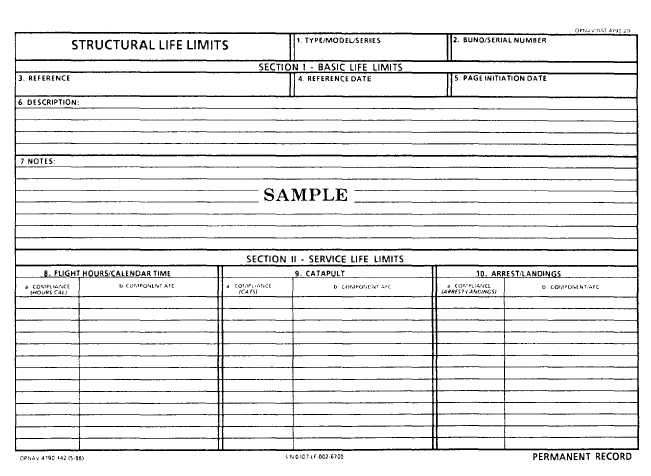retired is the operational service life or planned service life of the aircraft. For example, an aircraft is purchased by the Navy with a planned service life of 60 OPSERMOS. This means 60 months of actual operational use. The days during which this aircraft is in storage, undergoing special rework at the depot facility, etc., do not count toward the planned service life of the aircraft; they are nonaging days. A properly maintained nonaging record in the logbook provides a record of all time periods that the aircraft was not aging, and will ultimately aid in the aircraft receiving its full operational service life.
The dates entered in block 6 of the nonaging record reflect the entire period the aircraft is out of service, including all transit, awaiting, and in-process time (pipeline).
The accumulative nonaging days are recorded in block 8. If an entry exceeds 30, or a multiple thereof, record 30, 60, 90, etc., in block 8 and the excess in block 9. Whenever 30, 60, 90, etc., is entered in block 8, an OPNAV XRAY is forwarded to modify the period end date 1 month for each 30-day increment. After the OPNAV XRAY report, the accumulated days in block 8 are reduced to zero. The next entry in block 8 will include the total in block 9 from prior incidents.
NOTE: Not mission capable (NMC) or partial mission capable (PMC) time is NOT recorded on the nonaging record.
Structural Life Limits (OPNAV 4790/142)
The Structural Life Limits form is generated at the squadron level, and is used to maintain a current record of aircraft structural life limited items designated for depot-level replacement. The components, with their respective life limits, are listed in the applicable periodic maintenance information cards (PMICs) and the latest edition of NAVAIRINST 13120.1 for fixed-wing aircraft and NAVAIRINST 13130.1 for rotary-wing aircraft. The form is shown in figure 6-2.

Figure 6-2.-Structural Life Limits.
Continue Reading